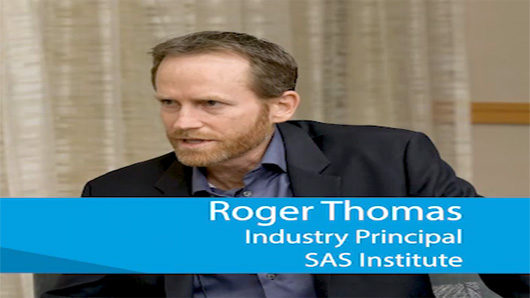
Visit Our Sponsors |
|
|
|
|
|
|
|
|
|
|
|
|
|
|
|
|
|
|
|
|
|
|
|
|
|
|
|
|
|
|
|
|
|
|
|
|
|
|

Companies that place their entire focus on new supply-chain technologies are in danger of losing sight of their larger business goals, warns Roger Thomas, industry principal with SAS Institute.
Companies that place their entire focus on new supply-chain technologies are in danger of losing sight of their larger business goals, warns Roger Thomas, industry principal with SAS Institute.
SCB: Do you feel that the attention being paid to technology, specifically artificial intelligence and machine learning, is causing companies to take their eye off the ball with regard to other important goals within the organization? If so, what?
Thomas: I do see that. The key is to not let that distract you from the core business value that you're seeking. Sometimes a technology initiative will cause to you lose track of why you started on the journey. There's got to be something else that's driving the organization, that's rallying the group to achieve a higher level of operation.
SCB: Who is the individual on the executive ladder who should be addressing that critical aspect that you just described?
Thomas: Different companies are going to have different strengths in leadership. There's definitely something to be said for the I.T. organization having a vision of establishing a center of excellence. But there’s also the supply-chain and commercial businesses. They all have different perspectives that come together. It’s less about who does what than whether they’re focused on the right things. It should be tied to the ultimate goal, which is serving customer need.
SCB: You said they all have different perspectives that come together. I wonder if that's more of an aspirational statement than reality, because of the existence of organizational silos, each with its own perspectives and goals. Don’t you need one person who oversees everything, and drives everybody in the same direction in terms of business process and requirements?
Thomas: It is an aspirational statement. It's important to be data-driven and fact-based.
SCB: Then there's the additional challenge of having to propagate that message upstream to your suppliers, and downstream to your customers. It's one thing for a company to achieve that common focus internally, but you have to communicate that to everyone in the supply chain. That sounds like a whole other level of complexity.
Thomas: It is. The collaboration element is critical. There’s the combination of people, personalities and metrics, and the question of what's going to be successful for each division. Bringing those different groups together is a challenge.
SCB: So business goals drive technology, not the other way around. That being the case, technology is nevertheless very important today, especially when it comes to artificial intelligence and machine learning. What role is it playing in demand planning and inventory optimization?
Thomas: People are looking to become more data-driven. There are new opportunities to help you with data quality. It’s about driving your analytics strategy to develop a higher level of competitive intelligence, and become more responsive, with the markets that you're going after.
SCB: How does an organization know that it’s making the right investments?
Thomas: These are big projects. There’s no quick fix — it takes collaboration and vision to bring groups together. It takes patience to plot these journeys, then show returns to the business, to demonstrate that you’re capturing value along the way.
SCB: As artificial intelligence and machine learning take on bigger roles in the organization, companies increasingly come to trust automated systems to make decisions for them. Will humans become less important as that happens?
Thomas: Yes. The vision is to go to autonomous. That's the whole “lights-out” vision for the supply chain.
SCB: Is that the future?
Thomas: It definitely is out there in the future, but it still ties back to humans. There’s a lot of talk today about how you leverage analytics in your business, but it’s really about connecting with people. How are you more effective with fewer people? How do you make them more effective in their jobs? But I don't see us necessarily being at the lights-out point in the immediate future. There’s a level of trust in the system that you need to build up. It’s something to aspire toward, but there's still a ways to go on that vision.
RELATED CONTENT
RELATED VIDEOS
Timely, incisive articles delivered directly to your inbox.

